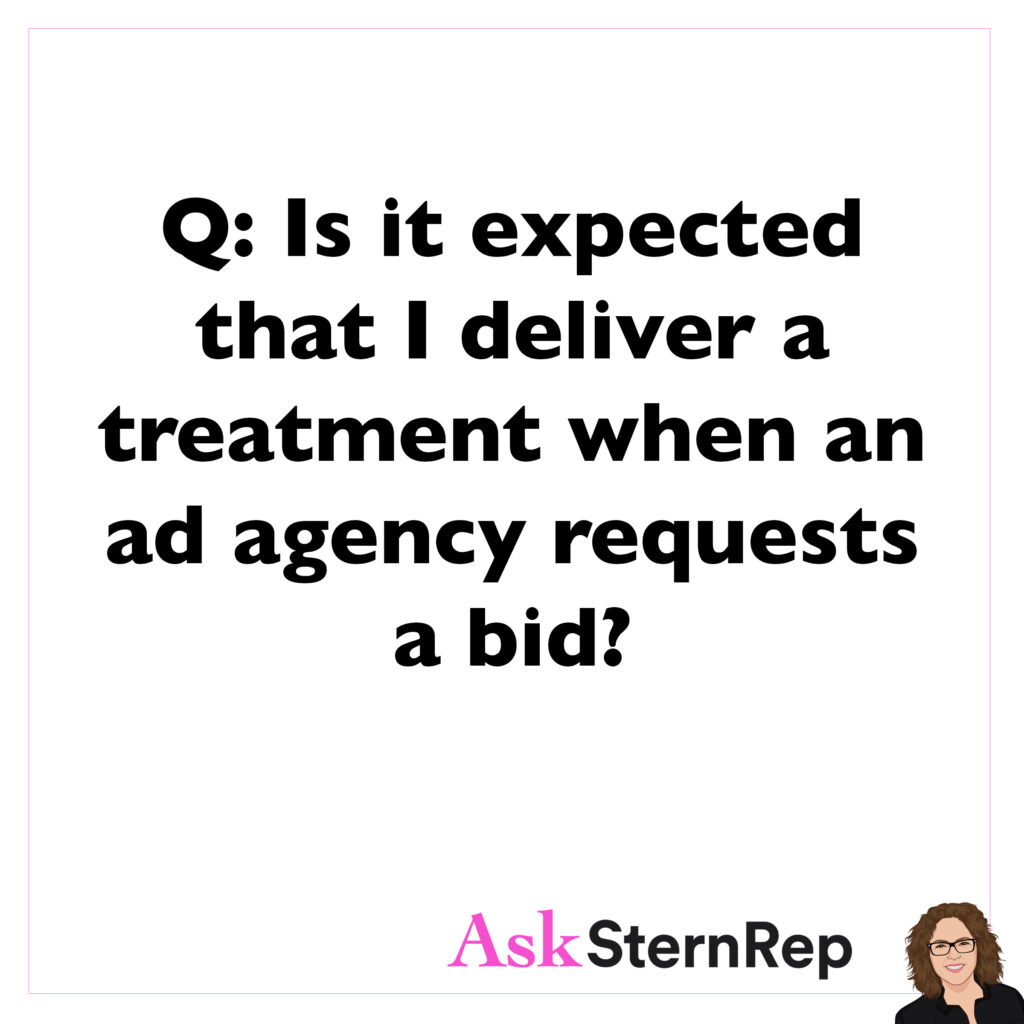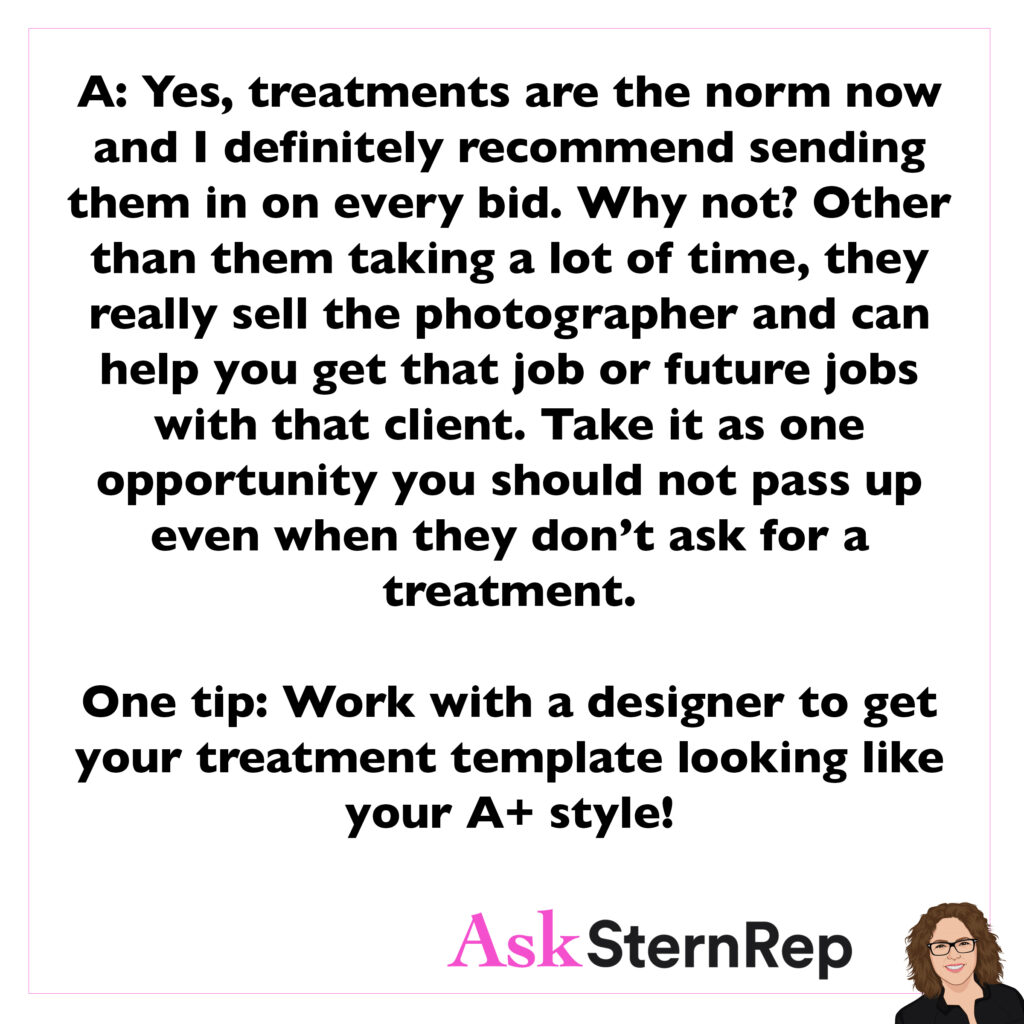In an effort to demystify this topic, I asked a variety of Art Producers to get the inside scoop on treatments.
Question: What do you believe is the purpose of a treatment?
FCB Chicago Art Buyer: The purpose of a treatment from our perspective is to confirm the photographer has taken, digested, and totally understood the brief and creative call. It’s an opportunity to make the creatives feel totally comfortable and at ease with the photographer’s expertise.
The photographer should also always feel empowered to bring their own flavor to the concept, too; we seek photographers out to be creative collaborators, so if a treatment is just going to directly mirror our concept/references and not add anything new then it’s not as strong as it could be if the photographer included some of his or her own ideas, as long as they’re in line with the concept and goal of the shoot/campaign.
Art Producer Cameron Barnum: Treatments are a critical tool in today’s bidding process. That might sound hyperbolic but I’m finding that Art Directors & Clients are coming to expect a treatment for any sizable project. Directors have long provided as much. Photographers would be well advised to join ranks.
Anonymous Art Producer: The treatment shows us how the photographer envisions the shoot happening, from style to locations to actual camera lensing. It gives us a look into what our project will become with that specific photographer.
Art Production + Creative Consulting Mara Serdans: The purpose of a treatment is to give the creatives and client an idea of how the photographer plans to execute the concepts through his/her lens. I think the photographer should use this as an opportunity to share any solutions to challenges/questions that were posed on the creative call as well. The photographer should also do more than just regurgitate what was discussed on the creative call but show the team his/her unique perspective. www.maraserdans.com
Question: What are some key components in putting together a successful treatment?
Art Producer Cameron Barnum: Photographers should embrace the treatment as an opportunity to show their craft & design sensibilities in the document itself. They should use it to further develop the ideas started by the initial creative briefing conversation. A treatment is also a great place to express their enthusiasm for taking on the job.
Anonymous Art Producer: I think attention to detail and thoughtfulness of the project as a whole is essential. I’ve gotten treatments where a photographer just threw some photos together and sent them over. I can find those on their website myself! Some of the best treatments I’ve gotten have broken things down so beautifully with an intro to them as a person, look and feel (and they explained why their look and feel would translate well to out project), location inspiration, wardrobe and talent styling, technical info, and just an overall breakdown of how they work. Those types of treatments literally lay the shoot out for us with such a clear picture.
Anonymous Art Producer: The PDF is well designed and showcases your ideas. Something that would stick out negatively is when it’s clear you didn’t understand the brief or have an idea that is totally off brand/message.
Question: What percentage of the treatment should be words, and what percentage images?
Anonymous Art Producer: I think about 60-70% images and 30-40% words. It’s nice to get a good overview of how you work and how you’d approach the job, particularly if we haven’t worked together and we only got to know you on a creative call.
Art Production + Creative Consulting Mara Serdans: I don’t think I can quantify a specific ratio of images to words but it should clearly and concisely communicate the concepts. And the photographer should inject a bit of his/her personality into the treatment. Also, don’t forget to spell-check and make sure everything sounds grammatically correct.
Art Producer Cameron Barnum: The content needs to match the scope of the project. A more complex project deserves a commensurate treatment. It’s hard to attach a ratio of words to pictures but given the visual art form, more of the latter would be expected. Components ought to touch upon the critical creative decisions. E.g location, casting, on-set workflow. Also, don’t be afraid to make it personal.


